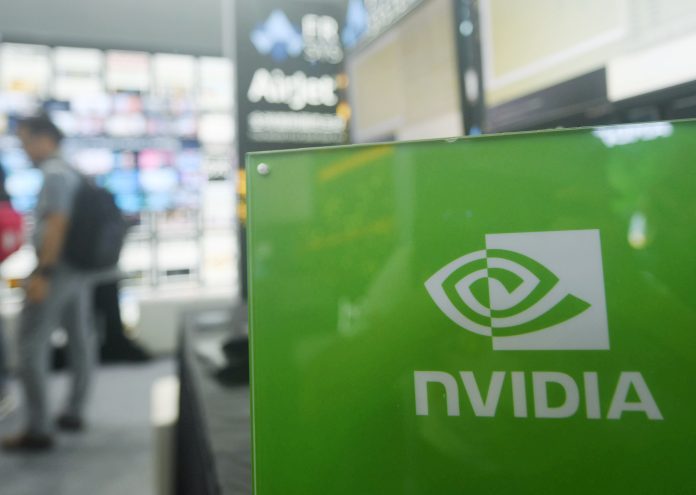In the dynamic realm of technology, Nvidia’s rise from a small startup to the world’s most valuable company is nothing short of extraordinary. As of June 2024, Nvidia’s remarkable journey is a testament to its innovation, strategic foresight, and pivotal decisions that have placed it at the helm of the artificial intelligence (AI) revolution. This article delves into Nvidia’s history, its groundbreaking innovations, and the key factors behind its unprecedented success.
The Early Days: From Diner to Tech Visionary
Nvidia’s story began in 1993 with Jensen Huang, the company’s founder and CEO. Huang’s path to tech prominence was unconventional. Starting as a waiter’s assistant at Denny’s, Huang’s fervent passion for computer science eventually led him to a role as a microprocessor designer at Advanced Micro Devices (AMD), a major chipmaker of the time. There, Huang envisioned a future where personal computers could achieve extraordinary performance in graphics processing.
This vision materialized when Huang and two colleagues, in an unlikely setting—a Denny’s booth—decided to start a new company. They named it Nvidia, derived from the Latin word “invidia,” meaning envy, reflecting their ambition to develop graphics cards that would make competitors envious.
Revolutionizing Gaming with the First GPU
Nvidia’s breakthrough came in 1999 with the GeForce 256, the world’s first true graphics processing unit (GPU) designed specifically for gaming. This innovation separated graphics rendering tasks from the central processing unit (CPU), resulting in significantly faster and smoother gameplay. The GeForce 256’s success established Nvidia as a leader in the GPU market and allowed the company to consistently outperform its main rival, AMD.
Beyond Gaming: The CUDA Platform
While Nvidia excelled in gaming, the company’s leadership, particularly Huang, had a broader vision. In 2006, Nvidia introduced CUDA, a software platform that enabled developers to use Nvidia GPUs for non-graphics tasks. This innovation opened new possibilities for GPU applications beyond gaming, including:
- Video Editing: GPU acceleration sped up video rendering and effects processing.
- Financial Modeling: GPUs facilitated more efficient financial simulations.
- Cryptocurrency Mining: The parallel processing power of GPUs proved ideal for mining cryptocurrencies like Bitcoin.
The most significant impact of CUDA was in artificial intelligence. Nvidia GPUs became the preferred choice for building and training AI models, thanks to their ability to perform numerous calculations simultaneously.
The AI Revolution and Nvidia’s Strategic Advantage
As AI technologies like machine learning and deep learning gained prominence in the 2010s, Nvidia’s GPUs, powered by CUDA, became indispensable. These GPUs’ parallel processing capabilities were crucial for training complex AI models and handling vast data sets. Nvidia’s technology is now integral to:
- Medical Research: Accelerating simulations for drug discovery and disease research.
- Autonomous Vehicles: Training algorithms for self-driving cars.
- Natural Language Processing: Powering large language models used in chatbots and translation services.
Nvidia’s dominance in AI hardware was further solidified by major cloud service providers, including AWS, who rely heavily on Nvidia technology for AI and high-performance computing.
Financial Success and Market Leadership
Nvidia’s strategic focus on AI has translated into exceptional financial success. The company’s revenue and stock price surged, particularly since 2020, driven by the AI boom. In June 2024, Nvidia became the world’s most valuable company by market capitalization, surpassing tech giants like Apple, Microsoft, and Samsung.
Nvidia also executed a 10:1 stock split to make shares more accessible, coinciding with a global surge in AI interest, further boosting its attractiveness to investors. Despite some stock price corrections, Nvidia’s overall trajectory remains strong, with ongoing innovation and a central role in the AI revolution promising a bright future.
Nvidia’s Impact Across Industries
Nvidia’s technology is transforming various sectors, including:
- Healthcare: Accelerating medical imaging, drug discovery, and genomics research.
- Automotive: Enhancing self-driving car development and advanced driver assistance systems.
- Entertainment: Creating stunning visual effects, animations, and next-gen VR/AR experiences.
- Climate Science: Running complex climate models to predict and mitigate climate change effects.
- Finance: Modernizing high-frequency trading algorithms and fraud detection systems.
- Robotics: Advancing robot development with AI technology.
Challenges and Future Outlook
Despite its success, Nvidia faces challenges:
- Competition: Tech giants like Google and Apple are developing their own AI chips.
- Regulatory Scrutiny: Increasing AI regulation could impact Nvidia’s business.
- Geopolitical Tensions: US-China tech rivalry could affect Nvidia’s global operations.
- Sustainability Concerns: Addressing the environmental impact of AI data centers is crucial.
Nevertheless, Nvidia’s future looks promising. The company continues to innovate with more powerful and efficient GPU designs and specialized AI chips. As AI evolves, Nvidia is well-positioned to lead advancements in areas like artificial general intelligence and the metaverse.
Nvidia’s evolution from a startup in a Denny’s booth to the world’s most valuable company highlights the power of innovation and strategic vision. By continually pushing the boundaries of GPU technology, Nvidia has not only revolutionized gaming but has also become a cornerstone of the AI revolution.
Nvidia’s story inspires entrepreneurs and innovators globally, showing that with vision, persistence, and adaptability, a small startup can become a global leader. As the AI era unfolds, all eyes will be on Nvidia to see what groundbreaking innovations they will bring next.


